Starting solids for an infant who has always known breast milk or formula fees is an overwhelming and emotional journey for parents, especially mothers. It is a very important milestone for the child, for now this six month old infant, who has been dependent on one type of food since its birth is now going to be exposed to what the world has to offer in terms of foods and taste and this can be the time when the child will also develop food choices and preferences which may last a lifetime.
But this journey is not an easy one for the caregiver because this means hours of experimentation, trial, and errors to find out not just what the child prefers but to also check for any food allergies or intolerance they may have towards certain foods. But we know that parenting doesn’t come with a guide because each child is unique and every parent is different so you may have to navigate your own way through the process. However many parents have been kind enough to have documented their baby weaning journeys and these become the testament for new mothers.
Weaning is the process of gradually introducing an infant to its adult diet while withdrawing the supply of its mother’s milk. Once the child can hold its neck, begins to sit upright with support, and shows readiness for other foods, you should know that they are ready to be weaned.
While most parents opt for formula food, or homemade purees and foods, and choose to feed their child, learning from experience what works and what doesn’t, here is another method to wean the baby. Baby Led Weaning is a process where you let your child take charge. It means skipping spoon-feeding purees and letting babies feed themselves finger foods right from the start at about age 6 months.
What is Baby-Led Weaning?
Baby-Led Weaning, a book written by Gill Rapley and Tracey Murkett, this method has been popularized and long been used around the world. Says an excerpt – “Though many believe that babies should be weaned by being spoon-fed purées, self-feeding allows babies to use their natural abilities to explore taste, texture, color and smell. It also encourages independence and confidence by allowing them to experiment with foods at their own pace”.
When Dr. Rohini Rau’s daughter completed six months, she had already decided she was going to let her baby lead the way. Rohini did her own research and looked out for ways to include Indian food as well as other world food into her diet. She shares her experience on Baby-led weaning along with 100 days of meal plans she followed for her little one.

“I started BLW from day 1 after my baby turned 6 months old”, says Rohini. “It’s been an amazing journey watching her go from pears to pineapples to dosas, pancakes, pasta and millet khichdi. She started feeding herself with a preloaded spoon. Yes, it was messy! But it was so lovely to see how her eyes lit up with excitement to try new food”.
“If anyone is on the fence about starting Baby-Led Weaning, I would highly recommend it”, suggests Rohini. “It has definitely been one of the most rewarding experiences so far. This is a milestone I am definitely proud of, as my entire family has supported me even though they initially had their doubts. They have listened to me when I’ve told them not to entertain her at the table, not to get alarmed when she gagged, not to worry if she didn’t eat something and not to get angry if she made a huge mess. Also planning the meals every day! It is not easy! But I know it will pay”.
Watching her explore different kinds of food for the last 3 months was an amazing experience for her as a mother. BLW teaches to take cues from the baby, stay calm when she gags or throws food, watch her use a spoon and drink water from a cup. By 7 months, her baby was already eating Capsicum, raw tomato, Brinjal (Aubergine), Ladies finger (Okra), Millets. Rohini gradually added different spices like turmeric, coriander powder, cumin, asafetida, mustard, and fennel.
“It’s amazing how good the food tastes with just natural sugars (fruits) and no salt. We can definitely learn a few things from our babies. I don’t force her to try new things, or force her to eat more. She loves her independence of eating so much that she doesn’t like me trying to feed her!”
Here are some tips she shares on BLW
1. Make sure you have a gap of 30-40 minutes between feeding milk and solids. That way your baby is not too hungry while trying solids and is more likely to be happy and willing to try more challenging foods.
2. Invest in a spoon and start with preloaded spoons right from day 1 – you will be surprised at how fast they understand that they have to hold the spoon to scoop food into their mouth.
3. Offer them water/ milk in an open cup – EZPZ or a shot glass. My little one loves taking sips from my glass as she can see through. But with a little help she is able to hold the glass with her hands and bring it to her mouth.
4. Some days they definitely eat better than others – so don’t worry if there isn’t much going in on certain days. They make up for it on other days.
5. Make cleaning up fun! Use a bib; I take her to the sink to wash her face, hands – sometimes her entire body. Try not to clean in between and wait for them to finish their meal. You could bring a container of water just to wash the hands and face to prevent dropping food on the way to the bathroom.
6. Be adventurous! And trust that your baby knows how to eat it. Even if they bite off something too big – they will gag and be able to spit it out. If you think they need help – try making them look down so gravity can do the trick. DO NOT put your finger in their mouth and do a blind sweep as you might end up pushing the food even further.
7. Bigger is better – In the first few months – they find it easier to hold onto food that’s bigger ( e.g. half a tomato, finger size width/ length, pancakes or dosas as big as your palm, whole strawberries, quartered grapes (length wise), watermelon – large thin rectangular pieces ) just to mention a few.
8. Try spices – everything apart from salt and chilli. You will be surprised at just how good it tastes and your baby loves tasty food too.
9. Using a high chair helps – especially with a footrest. Try and restrict high chair use only for food and not to put them in for play or other reasons.
10. Try not to let people around you talk to the baby while they are eating. It is easy to distract them, and they might get used to looking at your reaction especially if you give them encouragement on eating.
Dr. Rohini Rau’s meal combinations through her 100 day BLW journey
When I was raising my kids, I had no idea about BLW. But today, through blogs and social media, mothers are willing to share their experience with other new moms and this is a beautiful bond we women can share with each other especially at the part of motherhood where most of us feel lost and alone. Rohini took help from other moms @solidstarts @weaning_tales_by_mommas for guidance, support and recipes on her BLW journey and now shares her experience with others. More power to her!
You may contact Dr. Rohini Rau for guidance and consultation at rohinirau@gmail.com


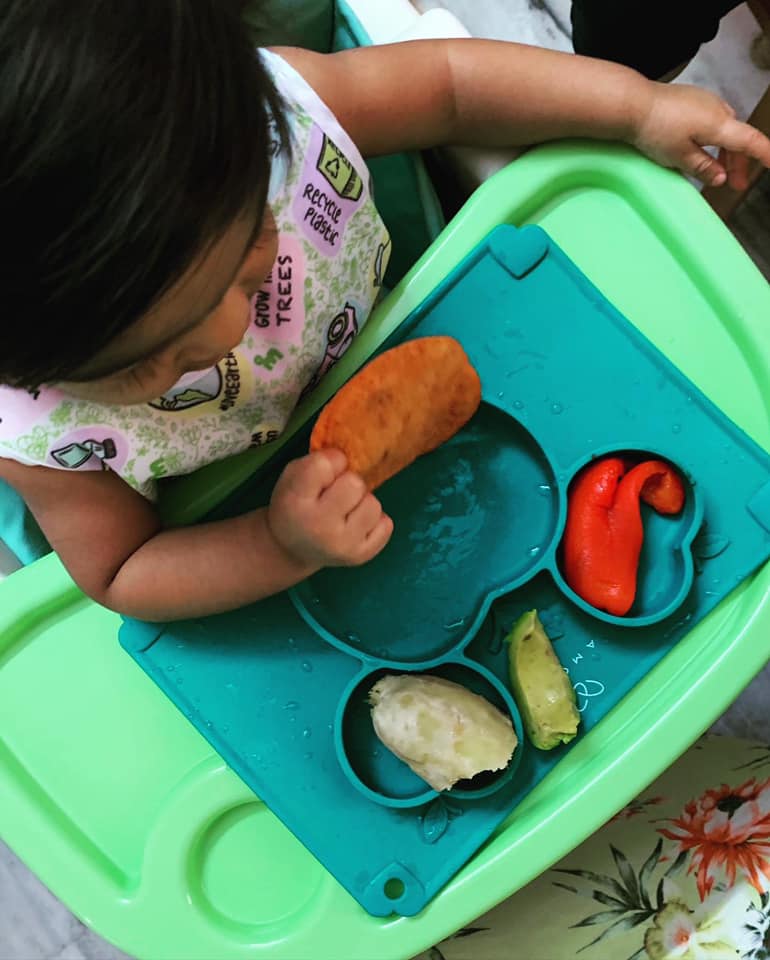
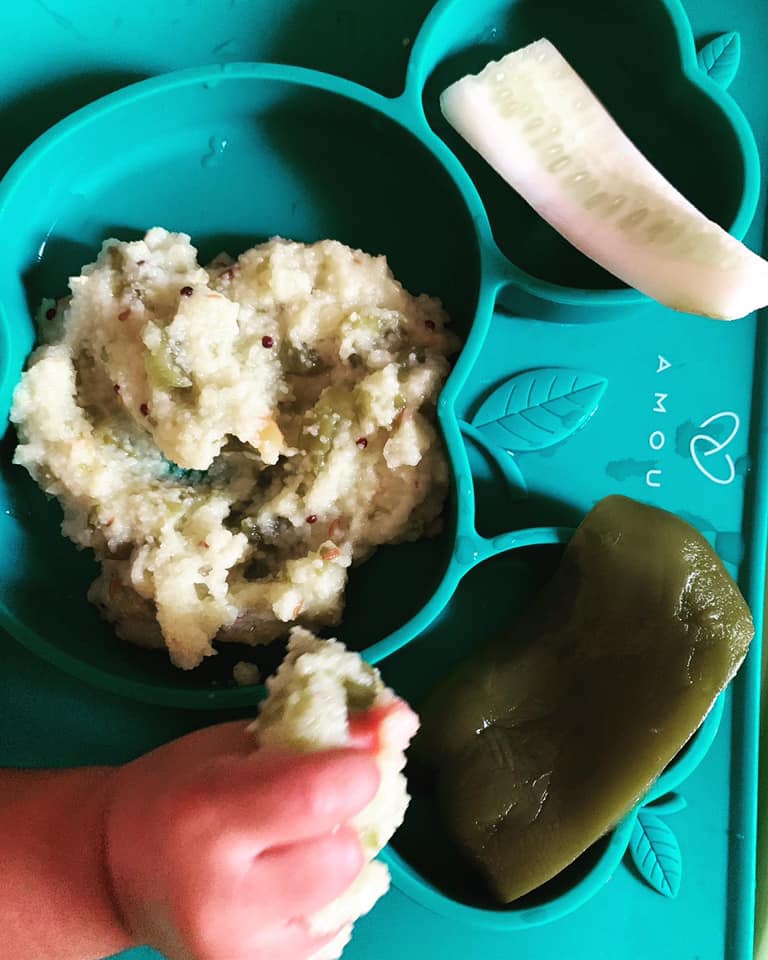
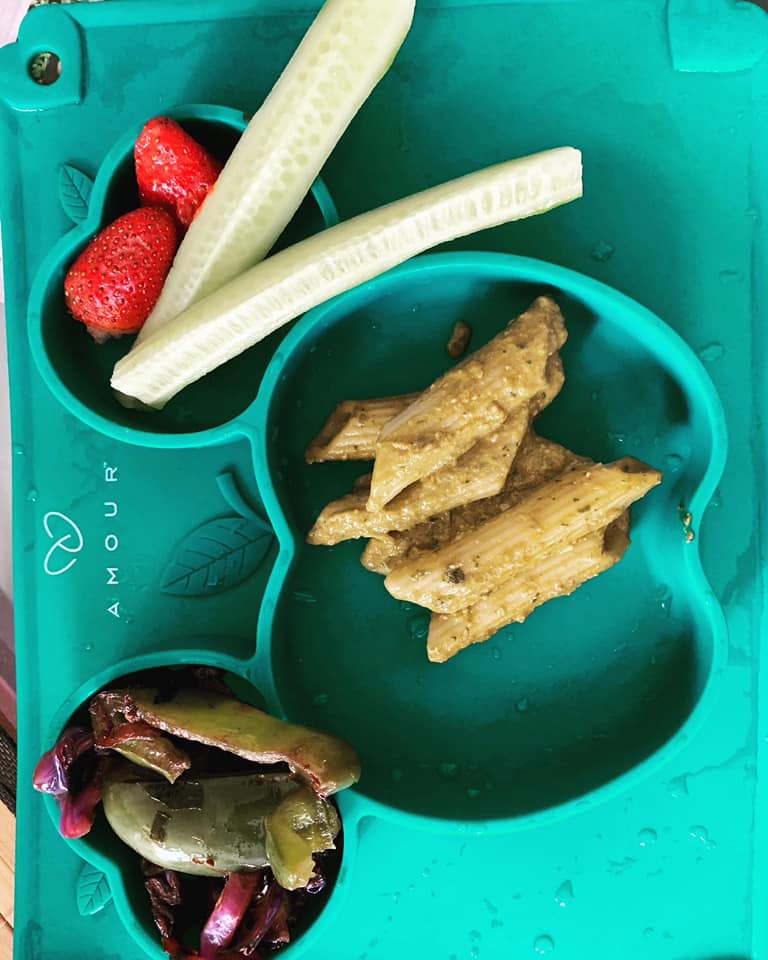

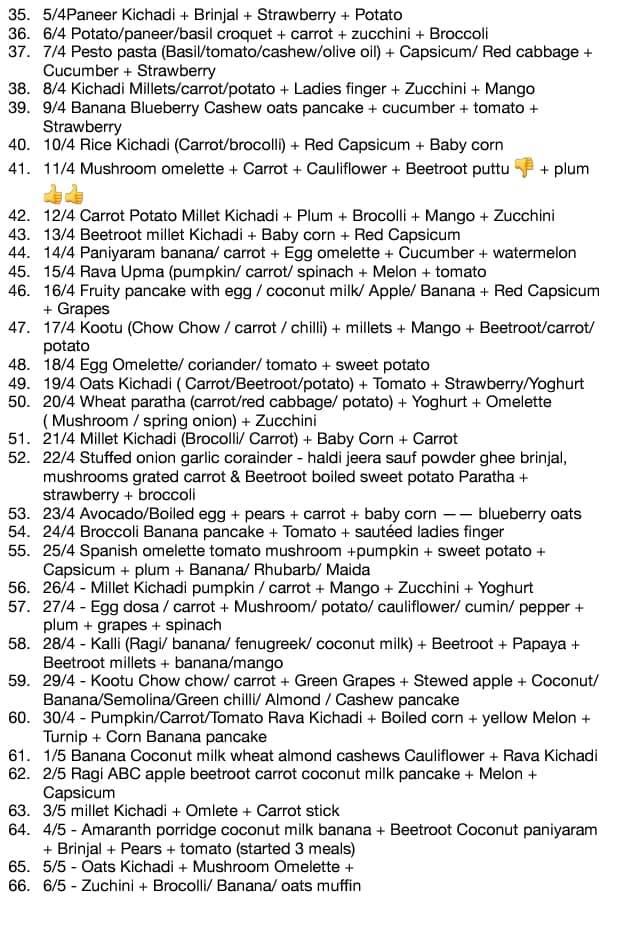
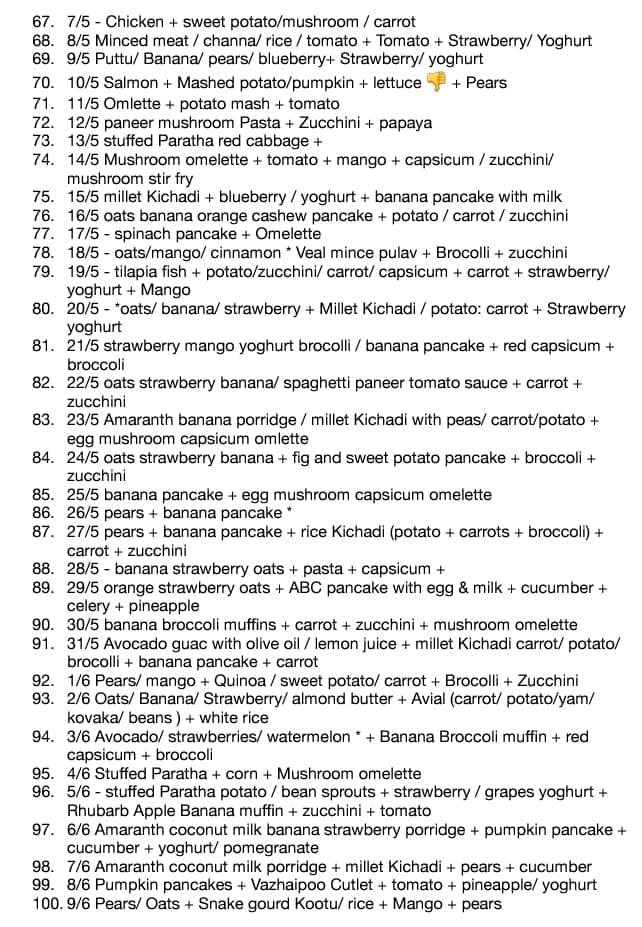







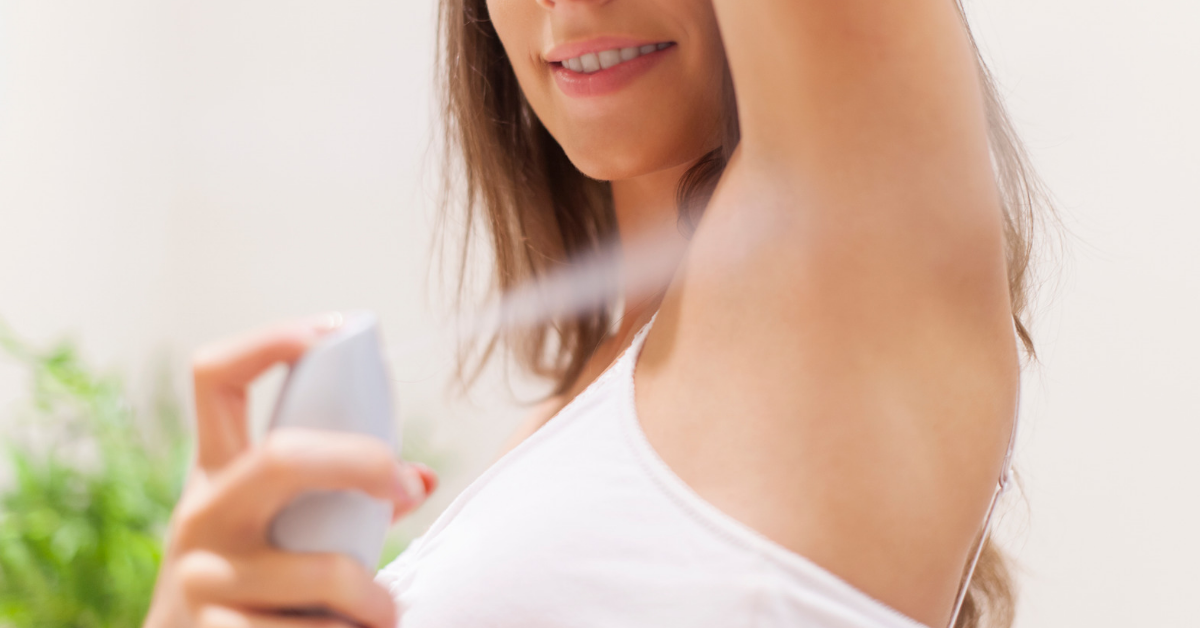











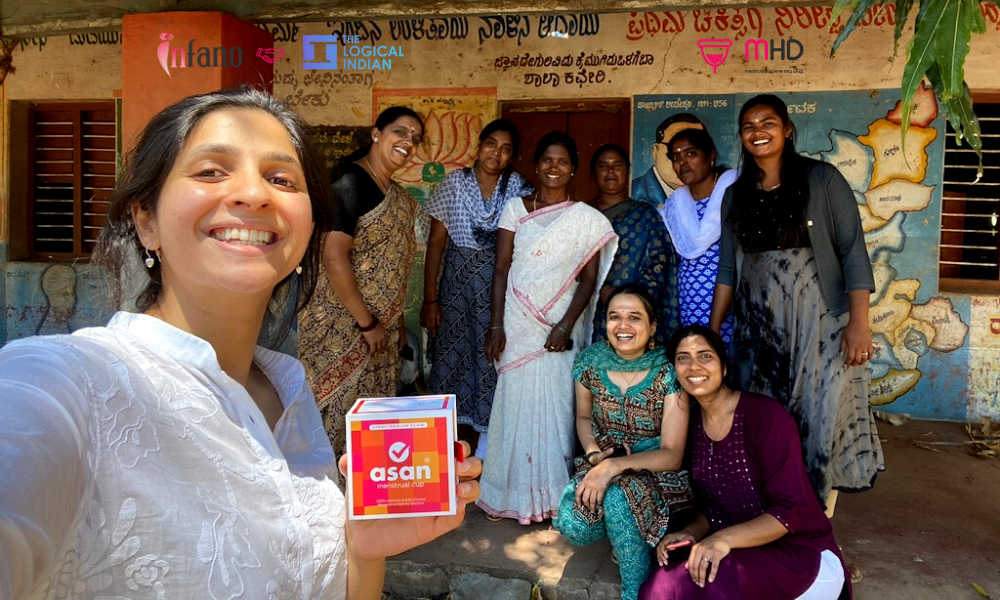
Very detailed yet simplistic and easy to implement for first time mothers.